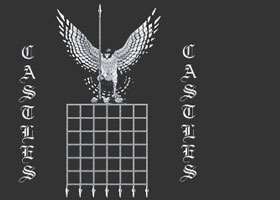 |
Medieval Castle Furniture |
| Medieval Castle Furniture
Medieval Castle Furniture | |||
| As time went by this lifestyle changed and castles were seen as more permanent residences with a requirement for additional luxury and comfort, although it was still customary to travel the Country. There were basically four different types of castle furniture:
|
Contrary to general opinion Medieval castles and their furniture were were often decorated in bright colours! Medieval Castle FurnitureWhat wood was Medieval Castle Furniture made from?
Castle furniture was assembled with joints which were secured by wooden pegs or iron nails. Glue was used to fasten canvas or leather which was sometimes added as an exterior finish or lining. Was Medieval Castle Furniture painted? Other methods used to decorate Medieval Castle Furniture
Items of Medieval furniture were covered in a variety of materials including:
Portable Medieval Castle Furniture
The origins of the term travelling trunk. Early chests were required to pack belongings when travelling about the land. The centre was hollowed out from the trunk of a tree - giving the origins of the word "trunk". The lid hinged with iron strap-hinges. Medieval Castle Furniture - Permanent fixtures
Medieval Castle Furniture |
FURNITURE IN THE GREAT HALL
CASTLE FURNITURE IN THE THRONE ROOM
CASTLE FURNITURE IN THE SOLAR
BEDROOM FURNITURE FOR THE RICH NOBLES
BEDROOM FURNITURE FOR THE POOR!
CASTLE FURNITURE IN THE WARDROBE
CASTLE FURNITURE IN THE BOWER
FURNITURE IN THE CHAPEL
FURNITURE IN THE ORATORY
Medieval Castle Furniture |
Medieval Castle Furniture | |||
Medieval Castle Furniture
|
| © March 2018 SiteSeen Ltd. | Cookies Policy | Privacy Statement | By Linda Alchin | ||
